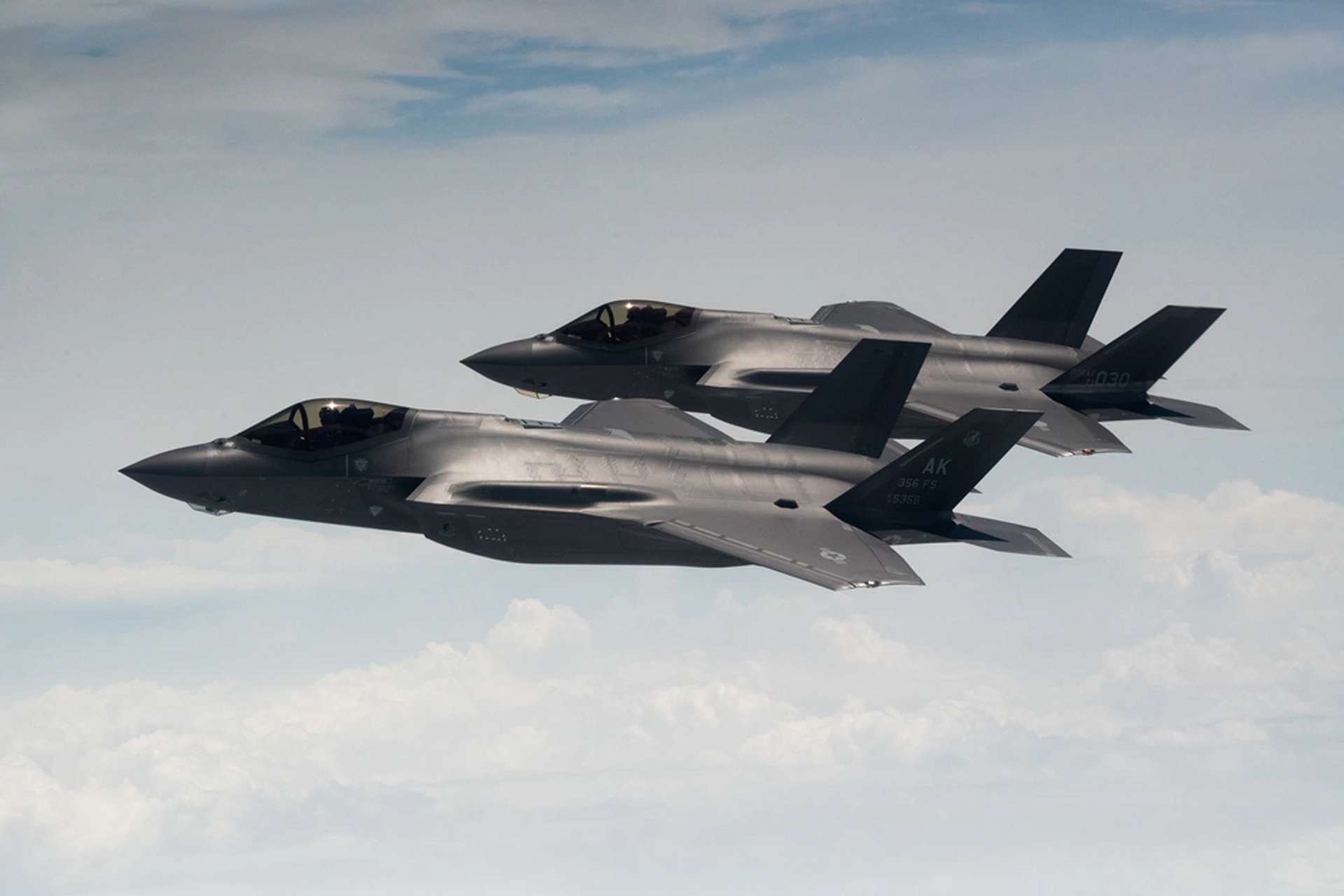Lockheed Martin Secures Contract for Czech Republic’s Integration into F-35 Program

{loadposition bannertop}
{loadposition sidebarpub}
Lockheed Martin’s Aeronautics division recently signed a contract worth $422.2 million to integrate the Czech Republic into the F-35 Joint Strike Fighter program. This contract covers program management, logistics, sustainment, and systems engineering services, thus enhancing the Czech Republic’s defense capabilities.Follow Army Recognition on Google News at this link
The F-35 is a multi-role combat aircraft developed by Lockheed Martin. (Picture source: US DoD)
The contract, issued by the Naval Air Systems Command at Patuxent River, Maryland, involves work to be carried out at undisclosed locations both in the United States and abroad. The project is expected to be completed by September 2027.
By June 2024, Lockheed Martin had delivered 992 F-35 aircraft, reflecting the growing demand for this versatile aircraft. The contract signed with the Czech Republic further strengthens the F-35’s strong position in the global combat aircraft market.
The F-35 is a multi-role combat aircraft developed by Lockheed Martin to meet the modern needs of armed forces, particularly those of the US Navy. This stealth fighter is designed for a wide range of missions, from ground attack to air superiority, as well as reconnaissance and intelligence gathering. It is powered by a Pratt & Whitney F135 engine, a turbojet with an afterburner, generating an impressive thrust of 178 kN. This allows it to reach a maximum speed of 1,700 km/h, or Mach 1.6, with an operational ceiling of 18,500 meters, making it highly effective for high-altitude missions.
The F-35 comes in three main variants: the F-35A, F-35B, and F-35C, each suited to specific types of operations. The F-35A, designed for traditional air forces, has a wingspan of 10.40 meters, a length of 15.85 meters, and a wing area of 42.7 square meters. The F-35B, capable of short takeoff and vertical landing (STOVL), shares the same dimensions but has a slightly higher empty weight, at 14,580 kg. Finally, the F-35C, designed for carrier-based operations, features a larger wingspan of 13.10 meters and an increased wing area of 57.6 square meters to enhance its landing capabilities on restricted surfaces.
In terms of operational capabilities, the F-35A has a combat range of 1,080 km, while the F-35B, optimized for maneuverability, has a reduced range of 869 km. The F-35C, designed for longer-range carrier operations, has a range of 1,138 km. In terms of endurance, all three variants can exceed 2,800 km, providing great flexibility for long missions.
The F-35 also stands out for its weapons-carrying capacity. It has two internal weapons bays, each with two pylons, capable of carrying up to 2,800 kg of weapons. In external configuration, it can carry up to 6,800 kg of additional weapons on six pylons. Its internal armament includes a 25mm GAU-22 cannon, essential for close combat. The F-35’s avionics systems, such as the AN/APG-81 radar and the AN/AAQ-37 infrared sensor, allow it to detect and engage long-range targets while maintaining stealth against enemy radar systems.
Gradually entering service in 2015 with the F-35A version, this aircraft represents a massive investment, with total development costs estimated at over $1 trillion in 2016. Each unit costs between $77 million and $143 million, depending on the variant and specific configurations. To date, more than 1,000 F-35s have been built, underscoring its strategic importance for the U.S. military and many allied forces worldwide.
Lockheed Martin is not the only company benefiting from the expanding global fighter aircraft market. Several of its competitors are also well-positioned to capitalize on this growth.
The recently awarded contract for the Czech Republic’s integration into the F-35 program marks a major step for Lockheed Martin, highlighting the continued demand for its advanced combat aircraft. As geopolitical tensions and defense spending continue to rise, Lockheed Martin remains well-placed to capitalize on these trends, thanks to its proven portfolio of combat aircraft.

{loadposition bannertop}
{loadposition sidebarpub}
Lockheed Martin’s Aeronautics division recently signed a contract worth $422.2 million to integrate the Czech Republic into the F-35 Joint Strike Fighter program. This contract covers program management, logistics, sustainment, and systems engineering services, thus enhancing the Czech Republic’s defense capabilities.
Follow Army Recognition on Google News at this link
The F-35 is a multi-role combat aircraft developed by Lockheed Martin. (Picture source: US DoD)
The contract, issued by the Naval Air Systems Command at Patuxent River, Maryland, involves work to be carried out at undisclosed locations both in the United States and abroad. The project is expected to be completed by September 2027.
By June 2024, Lockheed Martin had delivered 992 F-35 aircraft, reflecting the growing demand for this versatile aircraft. The contract signed with the Czech Republic further strengthens the F-35’s strong position in the global combat aircraft market.
The F-35 is a multi-role combat aircraft developed by Lockheed Martin to meet the modern needs of armed forces, particularly those of the US Navy. This stealth fighter is designed for a wide range of missions, from ground attack to air superiority, as well as reconnaissance and intelligence gathering. It is powered by a Pratt & Whitney F135 engine, a turbojet with an afterburner, generating an impressive thrust of 178 kN. This allows it to reach a maximum speed of 1,700 km/h, or Mach 1.6, with an operational ceiling of 18,500 meters, making it highly effective for high-altitude missions.
The F-35 comes in three main variants: the F-35A, F-35B, and F-35C, each suited to specific types of operations. The F-35A, designed for traditional air forces, has a wingspan of 10.40 meters, a length of 15.85 meters, and a wing area of 42.7 square meters. The F-35B, capable of short takeoff and vertical landing (STOVL), shares the same dimensions but has a slightly higher empty weight, at 14,580 kg. Finally, the F-35C, designed for carrier-based operations, features a larger wingspan of 13.10 meters and an increased wing area of 57.6 square meters to enhance its landing capabilities on restricted surfaces.
In terms of operational capabilities, the F-35A has a combat range of 1,080 km, while the F-35B, optimized for maneuverability, has a reduced range of 869 km. The F-35C, designed for longer-range carrier operations, has a range of 1,138 km. In terms of endurance, all three variants can exceed 2,800 km, providing great flexibility for long missions.
The F-35 also stands out for its weapons-carrying capacity. It has two internal weapons bays, each with two pylons, capable of carrying up to 2,800 kg of weapons. In external configuration, it can carry up to 6,800 kg of additional weapons on six pylons. Its internal armament includes a 25mm GAU-22 cannon, essential for close combat. The F-35’s avionics systems, such as the AN/APG-81 radar and the AN/AAQ-37 infrared sensor, allow it to detect and engage long-range targets while maintaining stealth against enemy radar systems.
Gradually entering service in 2015 with the F-35A version, this aircraft represents a massive investment, with total development costs estimated at over $1 trillion in 2016. Each unit costs between $77 million and $143 million, depending on the variant and specific configurations. To date, more than 1,000 F-35s have been built, underscoring its strategic importance for the U.S. military and many allied forces worldwide.
Lockheed Martin is not the only company benefiting from the expanding global fighter aircraft market. Several of its competitors are also well-positioned to capitalize on this growth.
The recently awarded contract for the Czech Republic’s integration into the F-35 program marks a major step for Lockheed Martin, highlighting the continued demand for its advanced combat aircraft. As geopolitical tensions and defense spending continue to rise, Lockheed Martin remains well-placed to capitalize on these trends, thanks to its proven portfolio of combat aircraft.






